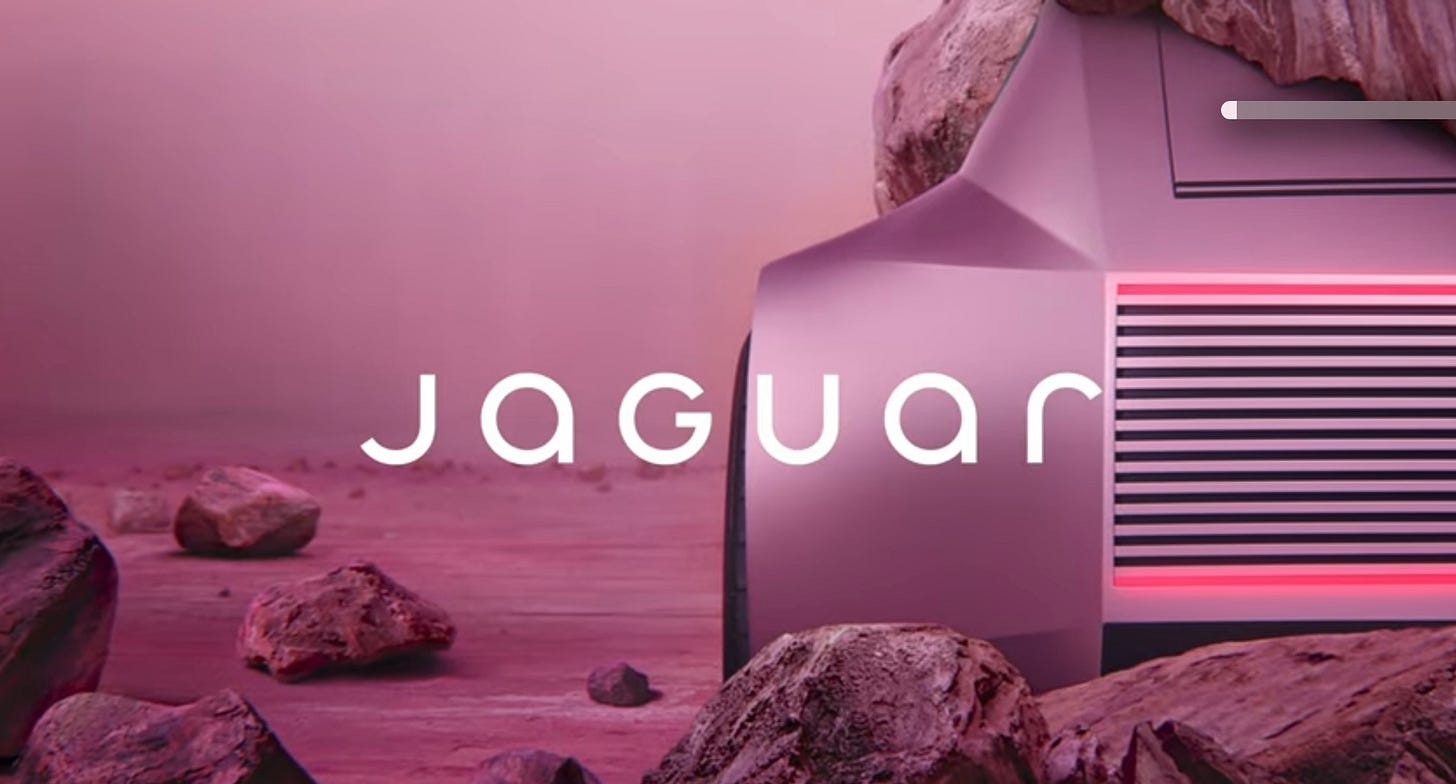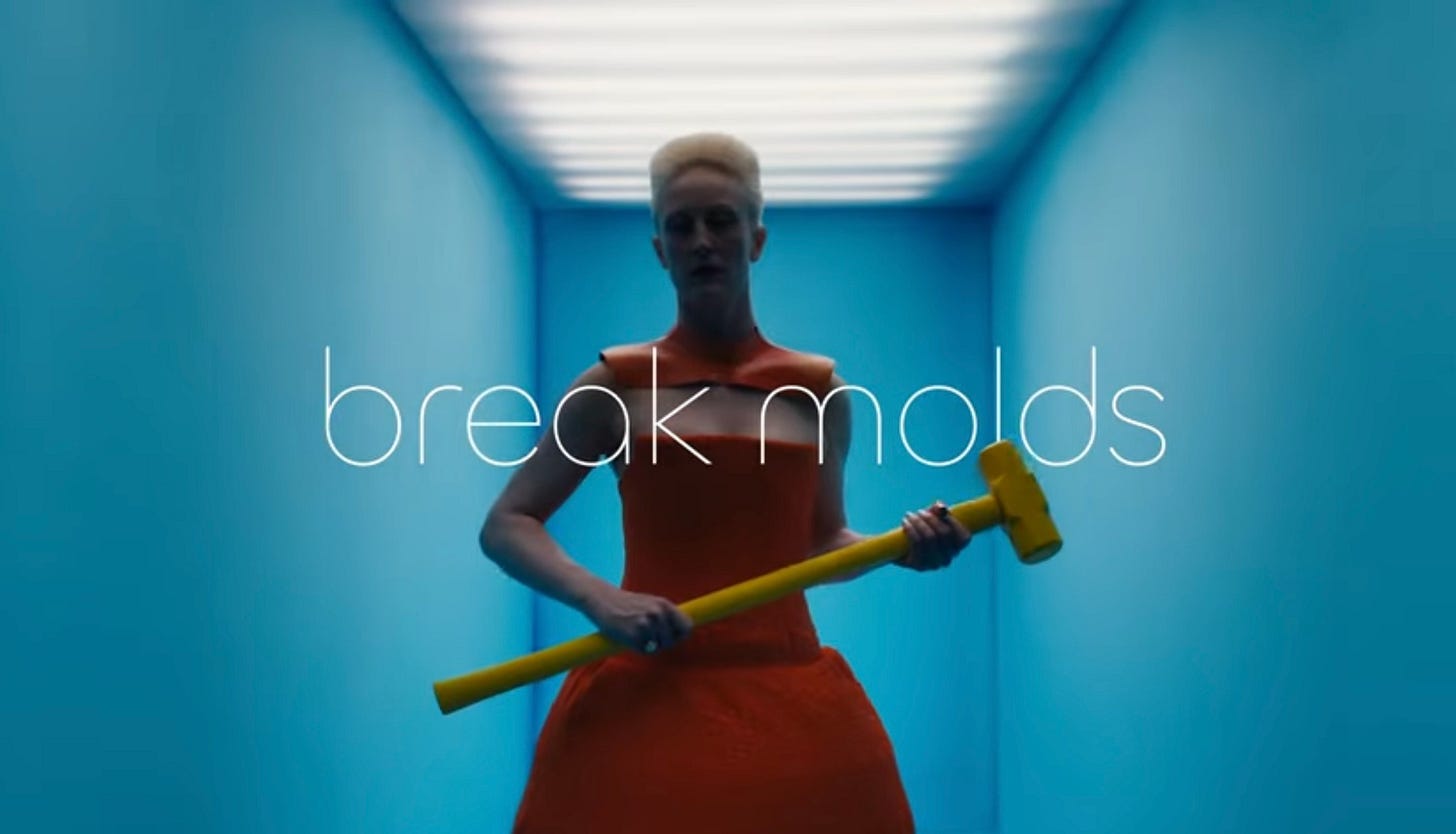FSW Briefing: Jaguar and the Role of Content Strategy in Value-Based Branding
FSW examines the heated debate over luxury car brand Jaguar's rebrand and what it means for the future of luxury consumer experience and content.
The aesthetics of luxury branding are highly polarizing.
Like any discussion of cultural values and creative expression, debating the “why” of any luxury company’s brand vision, ethos, and, in turn, its products and marketing, hits to the core of what defines the industry and sets it apart from other types of business.
The weakness of many ongoing debates about luxury brand strategy is a lack of concreteness. When it comes to luxury branding, there is not a lot of practical level setting to answer the “who’s it for” and “what value does it add” questions—in other words, the very real factors that translate and amplify brand vision into desirable, high-end products and content that inspire people to participate, experience, and purchase.
The current uproar over luxury automotive brand Jaguar’s rebranding has invoked a lot of discussion about the purpose and future of luxury brand strategy. While there is outrage at the lack of familiarity and “Jaguarness” of the rebrand, even the positive reviews have an edge of skepticism and a oh-here-we-go-again-with-a-heritage-brand-throwing-out-the-brand-playbook. There is a real sense of whether or not it’s just too late for Jaguar and whether this rebrand will make any difference.
What interests us as content strategists is that at the center of all the endless opinions and critical analyses of Jaguar’s rebrand lies an intense excitement and bewilderment over the sheer newness. Both in terms of branding and the concept car itself. Different stands out, even if it misses the mark. This speaks to the significant hurdle luxury brands now face when it comes to branding, products, content, and consumer experience: the seemingly unending sameness of it all.

Yes, Jaguar’s rollout of its rebrand has a lot of flaws from a content strategy perspective. The initial website launch lacked identifiable product referentiality, and the launch video arguably felt more like an early DALL-E digital fashion ad for the metaverse than a modern car ad. The stripping back of the Jaguar Instagram site felt a little inauthentic and too Balenciaga-like, rather than part of an overarching content strategy. Also, the post-concept car launch website page is heavy on the broadcast “why” of the new brand vision and values and light on the “who’s it for” and “what value does it bring me” quotients. As we have argued at length, the problem with a broadcast, design-first approach to digital transformation—even a value-centered one like Jaguar’s website copy declaring its “radical new design language”—is that it risks solipsism unless it is tied to meaningful, user-focused content that invites people into the experience to find, discover, and explore.

From our perspective, the entire Jaguar rebrand screams a need for holistic content strategy to connect the new brand vision and values to its own story and consumer needs and expectations. It’s not enough for the copy on the rebranded website to state: “The Jaguar Maker’s Mark. A stamp of provenance. Of excellence.” As brand marketer James Denman discussed recently in a LinkedIn post, the extreme newness of this Jaguar Year Zero project means the brand’s digital touchpoints—the primary means of communicating the “what” and “why” of the rebrand—would have benefited from more guided, directional content and more immersive, interactive elements to invite users to explore, learn, and discover. This is how proper brand universe-building happens.
Content strategy is content in action across touchpoints, anticipating and acknowledging what consumers think about and expect from your brand. What is missing for many people in the Jaguar rebrand is an expected nod-to-heritage factor that acknowledges the brand’s historic footprint while reinventing it. It is possible to throw out the rule book but still use it to create and empower a new one.
Jaguar is at the very beginning of its rebranding journey. Concept cars are released all the time. What remains to be seen so whether all of this hullabaloo even matters for a brand that is amidst an unprecedented reset. Jaguar is starting over because it doesn’t have another choice.
As Top Gear noted, “Jaguar doesn’t sell enough cars…. [I]t’s the tangible beginning of what Jaguar has been telegraphing for over a year: an unprecedented reset of its ailing operation. As of November 2024, no new Jaguars are in production for the first time since 1948.”
It will be interesting to see if Jaguar can implement a real strategy and leverage this rebrand buzz into a tangible, long-term turnaround.
Our suggestion to Jaguar’s teams would be to put in the work to create a holistic content strategy framework that is closely connected to the new brand playbook and backed by solid content operations to drive cohesive, story- and experience-driven, and community-building-focused content across channels. This is how you build brand universes and inspire consumers to participate and purchase.



